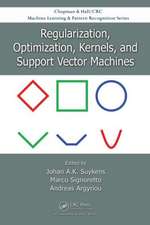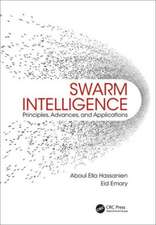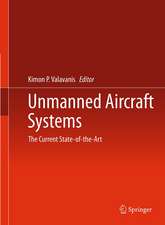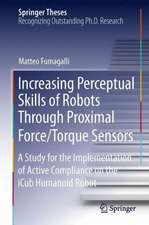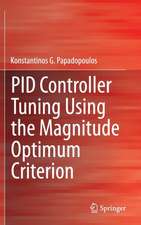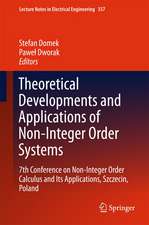Safety Factor Profile Control in a Tokamak: SpringerBriefs in Electrical and Computer Engineering
Autor Federico Bribiesca Argomedo, Emmanuel Witrant, Christophe Prieuren Limba Engleză Paperback – 22 noi 2013
Robustness considerations are ubiquitous in the analysis and control design since direct measurements on the magnetic flux are impossible (its estimation relies on virtual sensors) and large uncertainties remain in the coupling between the plasma particles and the radio-frequency waves (distributed inputs).
The Brief begins with a presentation of the reference dynamical model and continues by developing a Lyapunov function for the discretized system (in a polytopic linear-parameter-varying formulation). The limitations of this finite-dimensional approach motivate new developments in the infinite-dimensional framework. The text then tackles the construction of an input-to-state-stability Lyapunov function for the infinite-dimensional system that handles the medium anisotropy and provides a common basis for analytical robustness results. This function is used as a control-Lyapunov function and allows the amplitude and nonlinear shape constraints in the control action to be dealt with.
Finally, the Brief addresses important application- and implementation-specific concerns. In particular, the coupling of the PDE and the finite-dimensional subsystem representing the evolution of the boundary condition (magnetic coils) and the introduction of profile-reconstruction delays in the control loop (induced by solving a 2-D inverse problem for computing the magnetic flux) is analyzed. Simulation results are presented for various operation scenarios on Tore Supra (simulated with METIS) and on TCV (simulated with RAPTOR).
Control of the Safety FactorProfile in a Tokamak will be of interest to both academic and industrially-based researchers interested in nuclear energy and plasma-containment control systems, and graduate students in nuclear and control engineering.
Din seria SpringerBriefs in Electrical and Computer Engineering
- 19%
 Preț: 427.20 lei
Preț: 427.20 lei -
 Preț: 377.35 lei
Preț: 377.35 lei -
 Preț: 380.07 lei
Preț: 380.07 lei -
 Preț: 378.12 lei
Preț: 378.12 lei - 20%
 Preț: 379.08 lei
Preț: 379.08 lei -
 Preț: 377.18 lei
Preț: 377.18 lei - 20%
 Preț: 234.68 lei
Preț: 234.68 lei - 20%
 Preț: 232.43 lei
Preț: 232.43 lei -
 Preț: 378.12 lei
Preț: 378.12 lei -
 Preț: 377.18 lei
Preț: 377.18 lei - 20%
 Preț: 231.41 lei
Preț: 231.41 lei -
 Preț: 377.18 lei
Preț: 377.18 lei -
 Preț: 377.95 lei
Preț: 377.95 lei -
 Preț: 444.74 lei
Preț: 444.74 lei -
 Preț: 382.36 lei
Preț: 382.36 lei -
 Preț: 378.12 lei
Preț: 378.12 lei -
 Preț: 378.92 lei
Preț: 378.92 lei - 20%
 Preț: 232.43 lei
Preț: 232.43 lei -
 Preț: 376.80 lei
Preț: 376.80 lei -
 Preț: 377.35 lei
Preț: 377.35 lei -
 Preț: 377.18 lei
Preț: 377.18 lei -
 Preț: 381.00 lei
Preț: 381.00 lei -
 Preț: 376.43 lei
Preț: 376.43 lei -
 Preț: 377.18 lei
Preț: 377.18 lei -
 Preț: 378.54 lei
Preț: 378.54 lei - 20%
 Preț: 321.20 lei
Preț: 321.20 lei -
 Preț: 377.73 lei
Preț: 377.73 lei -
 Preț: 341.75 lei
Preț: 341.75 lei -
 Preț: 344.25 lei
Preț: 344.25 lei -
 Preț: 379.09 lei
Preț: 379.09 lei - 20%
 Preț: 324.64 lei
Preț: 324.64 lei -
 Preț: 377.57 lei
Preț: 377.57 lei -
 Preț: 378.71 lei
Preț: 378.71 lei - 20%
 Preț: 321.66 lei
Preț: 321.66 lei - 20%
 Preț: 230.85 lei
Preț: 230.85 lei -
 Preț: 374.30 lei
Preț: 374.30 lei -
 Preț: 375.45 lei
Preț: 375.45 lei -
 Preț: 360.05 lei
Preț: 360.05 lei -
 Preț: 381.43 lei
Preț: 381.43 lei -
 Preț: 378.34 lei
Preț: 378.34 lei -
 Preț: 376.22 lei
Preț: 376.22 lei - 20%
 Preț: 323.99 lei
Preț: 323.99 lei -
 Preț: 380.07 lei
Preț: 380.07 lei -
 Preț: 375.62 lei
Preț: 375.62 lei - 20%
 Preț: 321.20 lei
Preț: 321.20 lei -
 Preț: 377.18 lei
Preț: 377.18 lei - 5%
 Preț: 361.80 lei
Preț: 361.80 lei -
 Preț: 378.12 lei
Preț: 378.12 lei -
 Preț: 375.07 lei
Preț: 375.07 lei -
 Preț: 376.22 lei
Preț: 376.22 lei
Preț: 377.18 lei
Nou
Puncte Express: 566
Preț estimativ în valută:
72.20€ • 78.45$ • 60.68£
72.20€ • 78.45$ • 60.68£
Carte tipărită la comandă
Livrare economică 21 aprilie-05 mai
Preluare comenzi: 021 569.72.76
Specificații
ISBN-13: 9783319019574
ISBN-10: 3319019570
Pagini: 108
Ilustrații: XI, 96 p. 29 illus., 24 illus. in color.
Dimensiuni: 155 x 235 x 6 mm
Greutate: 0.16 kg
Ediția:2014
Editura: Springer International Publishing
Colecția Springer
Seriile SpringerBriefs in Electrical and Computer Engineering, SpringerBriefs in Control, Automation and Robotics
Locul publicării:Cham, Switzerland
ISBN-10: 3319019570
Pagini: 108
Ilustrații: XI, 96 p. 29 illus., 24 illus. in color.
Dimensiuni: 155 x 235 x 6 mm
Greutate: 0.16 kg
Ediția:2014
Editura: Springer International Publishing
Colecția Springer
Seriile SpringerBriefs in Electrical and Computer Engineering, SpringerBriefs in Control, Automation and Robotics
Locul publicării:Cham, Switzerland
Public țintă
ResearchCuprins
Introduction.- Mathematical model of the safety factor and control problem formulation.- A polytopic LPV approach for finite-dimensional control.- Infinite-dimensional Control.- Lyapunov Function.- Controller implementation.
Textul de pe ultima copertă
Control of the Safety Factor Profile in a Tokamak uses Lyapunov techniques to address a challenging problem for which even the simplest physically relevant models are represented by nonlinear, time-dependent, partial differential equations (PDEs). This is because of the spatiotemporal dynamics of transport phenomena (magnetic flux, heat, densities, etc.) in the anisotropic plasma medium. Robustness considerations are ubiquitous in the analysis and control design since direct measurements on the magnetic flux are impossible (its estimation relies on virtual sensors) and large uncertainties remain in the coupling between the plasma particles and the radio-frequency waves (distributed inputs).
The Brief begins with a presentation of the reference dynamical model and continues by developing a Lyapunov function for the discretized system (in a polytopic linear-parameter-varying formulation). The limitations of this finite-dimensional approach motivate new developments in the infinite-dimensional framework. The text then tackles the construction of an input-to-state-stabilityLyapunov function for the infinite-dimensional system that handles the medium anisotropy and provides a common basis for analytical robustness results. This function is used as a control-Lyapunov function and allows the amplitude and nonlinear shape constraints in the control action to be dealt with.
Finally, the Brief addresses important application- and implementation-specific concerns. In particular, the coupling of the PDE and the finite-dimensional subsystem representing the evolution of the boundary condition (magnetic coils) and the introduction of profile-reconstruction delays in the control loop (induced by solving a 2-D inverse problem for computing the magnetic flux) is analyzed. Simulation results are presented for various operation scenarios on Tore Supra (simulated with METIS) and on TCV (simulated with RAPTOR).
Control of the Safety FactorProfile in a Tokamak will be of interest to both academic and industrially-based researchers interested in nuclear energy and plasma-containment control systems, and graduate students in nuclear and control engineering.
The Brief begins with a presentation of the reference dynamical model and continues by developing a Lyapunov function for the discretized system (in a polytopic linear-parameter-varying formulation). The limitations of this finite-dimensional approach motivate new developments in the infinite-dimensional framework. The text then tackles the construction of an input-to-state-stabilityLyapunov function for the infinite-dimensional system that handles the medium anisotropy and provides a common basis for analytical robustness results. This function is used as a control-Lyapunov function and allows the amplitude and nonlinear shape constraints in the control action to be dealt with.
Finally, the Brief addresses important application- and implementation-specific concerns. In particular, the coupling of the PDE and the finite-dimensional subsystem representing the evolution of the boundary condition (magnetic coils) and the introduction of profile-reconstruction delays in the control loop (induced by solving a 2-D inverse problem for computing the magnetic flux) is analyzed. Simulation results are presented for various operation scenarios on Tore Supra (simulated with METIS) and on TCV (simulated with RAPTOR).
Control of the Safety FactorProfile in a Tokamak will be of interest to both academic and industrially-based researchers interested in nuclear energy and plasma-containment control systems, and graduate students in nuclear and control engineering.
Caracteristici
Complete study of the safety factor profile control in a tokamak provides a single reference for the reader Use of several well-established control techniques and comparison of these enabling the reader to select the most appropriate Written by experts in the field Includes supplementary material: sn.pub/extras






